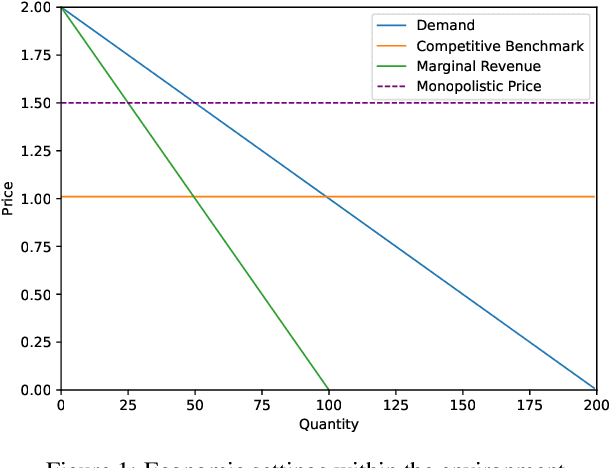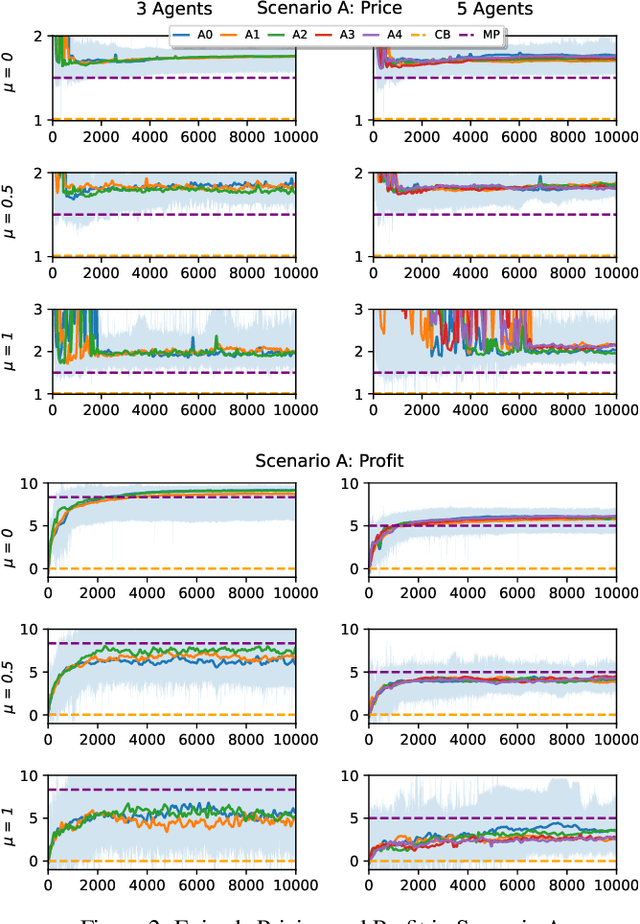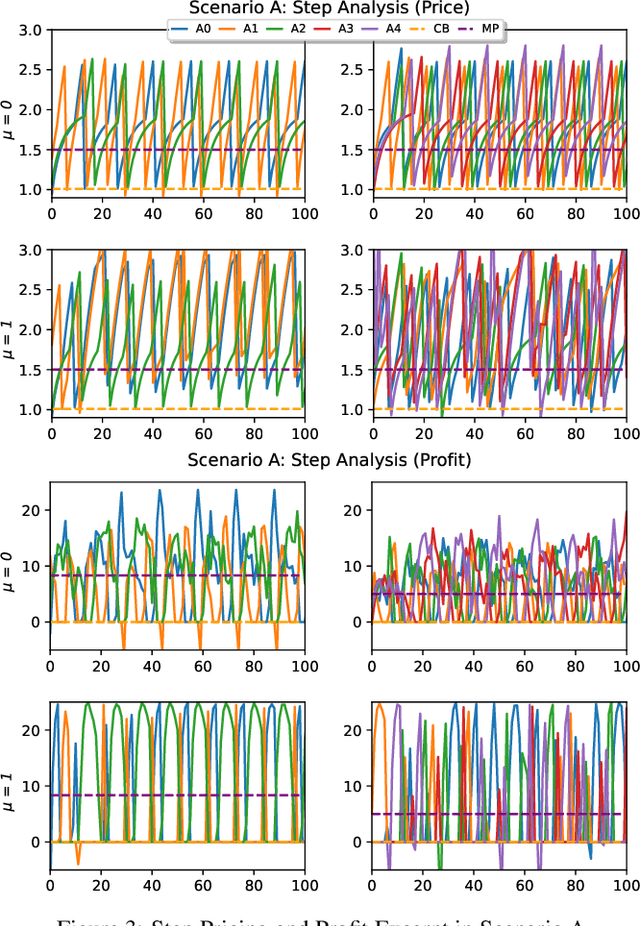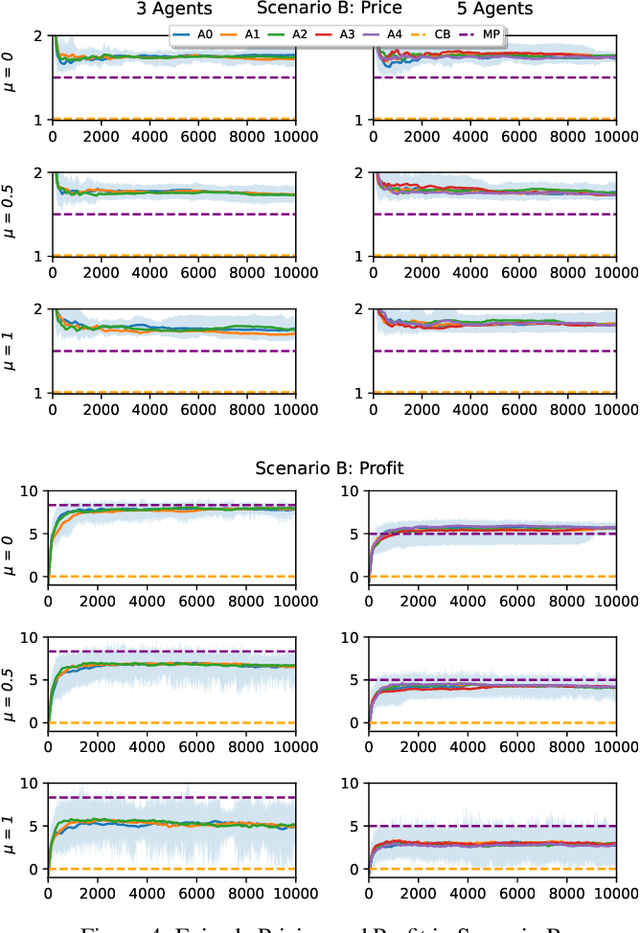Franz Krause
By Fair Means or Foul: Quantifying Collusion in a Market Simulation with Deep Reinforcement Learning
Jun 04, 2024



Abstract:In the rapidly evolving landscape of eCommerce, Artificial Intelligence (AI) based pricing algorithms, particularly those utilizing Reinforcement Learning (RL), are becoming increasingly prevalent. This rise has led to an inextricable pricing situation with the potential for market collusion. Our research employs an experimental oligopoly model of repeated price competition, systematically varying the environment to cover scenarios from basic economic theory to subjective consumer demand preferences. We also introduce a novel demand framework that enables the implementation of various demand models, allowing for a weighted blending of different models. In contrast to existing research in this domain, we aim to investigate the strategies and emerging pricing patterns developed by the agents, which may lead to a collusive outcome. Furthermore, we investigate a scenario where agents cannot observe their competitors' prices. Finally, we provide a comprehensive legal analysis across all scenarios. Our findings indicate that RL-based AI agents converge to a collusive state characterized by the charging of supracompetitive prices, without necessarily requiring inter-agent communication. Implementing alternative RL algorithms, altering the number of agents or simulation settings, and restricting the scope of the agents' observation space does not significantly impact the collusive market outcome behavior.
On a Generalized Framework for Time-Aware Knowledge Graphs
Jul 20, 2022

Abstract:Knowledge graphs have emerged as an effective tool for managing and standardizing semistructured domain knowledge in a human- and machine-interpretable way. In terms of graph-based domain applications, such as embeddings and graph neural networks, current research is increasingly taking into account the time-related evolution of the information encoded within a graph. Algorithms and models for stationary and static knowledge graphs are extended to make them accessible for time-aware domains, where time-awareness can be interpreted in different ways. In particular, a distinction needs to be made between the validity period and the traceability of facts as objectives of time-related knowledge graph extensions. In this context, terms and definitions such as dynamic and temporal are often used inconsistently or interchangeably in the literature. Therefore, with this paper we aim to provide a short but well-defined overview of time-aware knowledge graph extensions and thus faciliate future research in this field as well.
 Add to Chrome
Add to Chrome Add to Firefox
Add to Firefox Add to Edge
Add to Edge